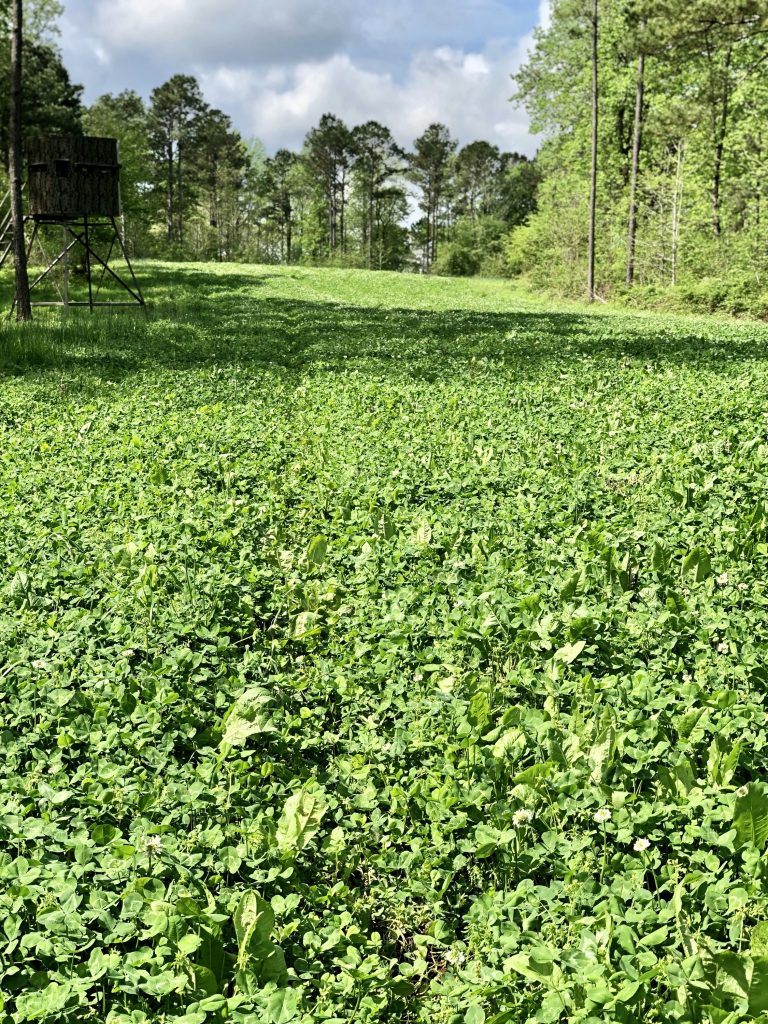What comes to mind when you think of the best food plot for deer in the spring and fall?
After your last deer hunt each year, do you review the highs and lows of the past season? Are you one of those hunters that immediately begin formulating a plan to draw more deer to your property next year? If so, now is the time to reevaluate your green field offerings and add year-round forage for your deer. You might also consider adding a more permanent solution by planting a few trees to add additional high-quality mast and maybe even a few varieties of plants for soft mast production.
Like many hunters, you probably view food plots as a place to sit in a shooting house, ground blind, or elevated stand with the hope of harvesting a trophy deer. Unfortunately, many hunters plant their fields to provide fall and winter forage but neglect them come spring and summer. However, newer planting options are available that many landowners may not have considered.
Evolving technology has contributed to many innovations that become apparent when one looks at the vast array of new bows, firearms, and even air-powered rifles offered to hunters each year. As a result, today’s hunter has more choices in their hunting clothes, gear, and blinds than any previous generation.
These choices extend to the variety of the seed and fertilizers they can use to attract and keep deer on their property. The hunters who educate themselves concerning the best available food plot options for their particular location can ensure that the deer will gravitate to their deer plots in the spring and utilize them through the fall into bow season. Deer need good quality forage all year, especially in late winter and early spring when does are heavy with fawns and bucks begin new antler growth.
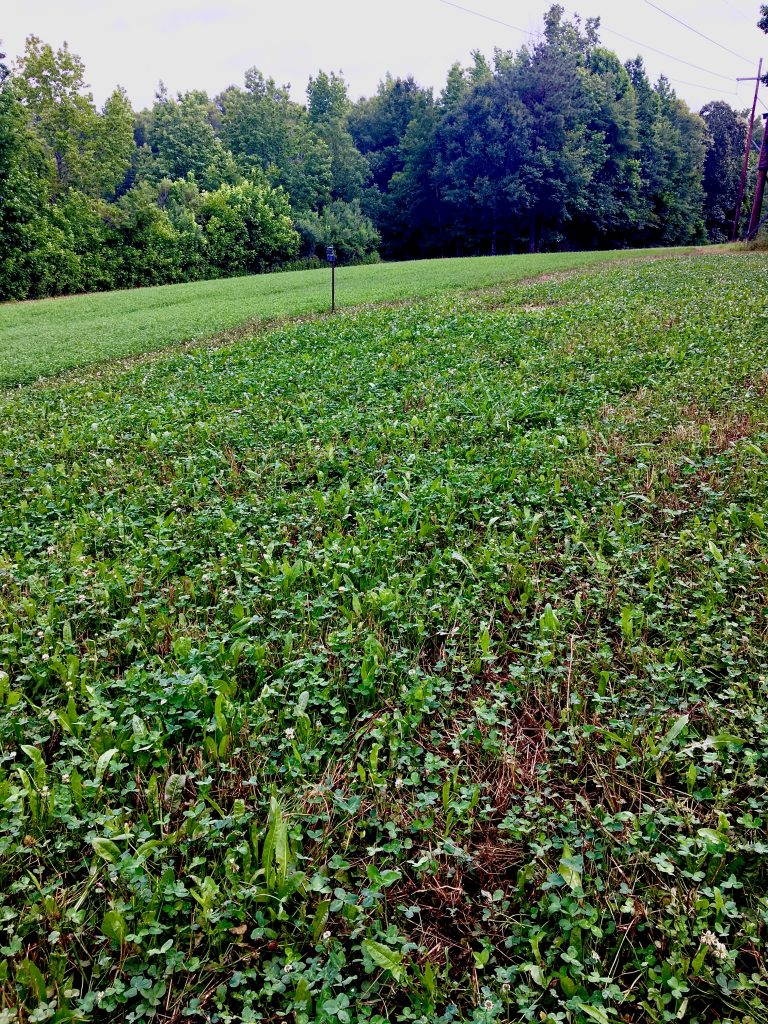
In Alabama, deer have traditionally depended on the hard mast from various oaks to increase their fat stores to help them endure the winter months till springtime when everything greens up. Unfortunately, many oaks require at least 20 years to produce a decent crop of acorns, and peak production for some species takes about 50 years. Also, acorn production varies yearly, and deer prefer acorns with the least tannic acid.
Whether one is the manager of a large hunting operation or simply a hunter with one small field to plant, each has the same goal of drawing deer to a particular area by planting and fertilizing a variety of forage to attract and hold deer nearby.
The availability and choices of what crops to plant for deer are so numerous as to be overwhelming. Many stores carry bags with exotic names and pictures of a large antlered buck on the front, but that’s no guarantee that those seeds will perform well where you intend to plant them.
The knowledgeable landowner will do annual soil testing to determine ph and soil type to help pick the appropriate seed and fertilizer for their plantings. Doing so will also help grow the healthiest does and biggest bucks while increasing the chances that their time and effort will result in some great memories and good stories shared around the supper table.
Planning The Best Food Plot For Deer
Research indicates that 1/2 acre is the average size of the typical whitetail food plot. Though their size varies greatly, most experts suggest a 1/4 acre minimum. Also, remember that if there are other plots nearby on adjoining property, it’s a good idea to find out what your neighbor’s plans are for his fields. It’s also helpful to know when they are planting.
Deer are similar to humans when it comes to food. We don’t mind experimenting, but we know what we like. Deer eat a variety of browse, plants, and acorns based on nutritional needs and taste. They need a certain amount of calories each day, and their feeding increases as the temperature drops.
Deer can be picky about their food sources and have preferences for what they eat throughout the year. That’s why planting additional nut-bearing trees on your property might be a viable option for some landowners.
Types of Deer Food Plot Forage
The main categories of plants that most whitetail hunters plant are cereal grains, brassicas and legumes. Within these seed groups are varieties developed for specific soil types, ph tolerance, and latitude. So whether it’s along the Alabama Gulf Coast or into the Canadian interior, there are plenty of good choices when planting food plots for deer.
Brassica – is from modern Latin and can be translated as cabbage-like. This category includes leafy plants like turnips, radishes, kale, chicory, and canola, along with some newer additions. Brassicas do well in moist, well-drained areas and tolerate a broad pH range but require plenty of fertilizer to continue their growth into late winter. They are freeze tolerant and preferred by deer after the cold changes their starch to sugar. Food plots planted in brassica produce up to 10 tons of forage per acre, with crude protein ranging from 20% to 38%.
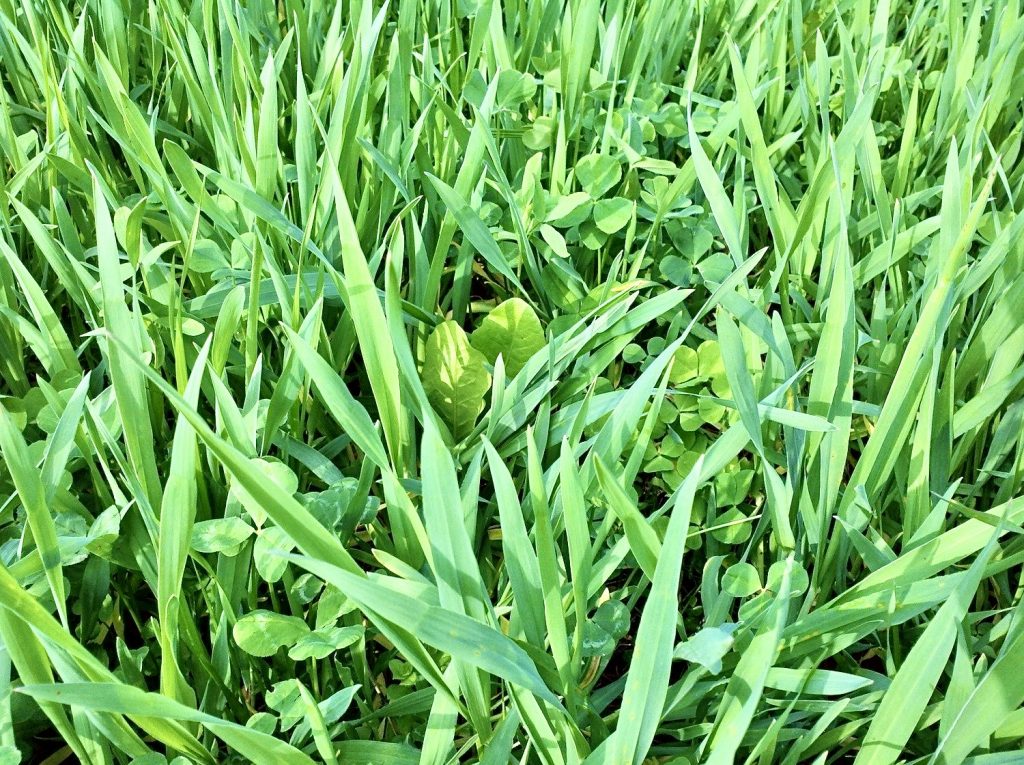
Cereal Grains – include wheat, oats, cereal rye, and triticale. Different cereal grains tolerate wetter soils (rye/wheat) and some do better in drier soils (oats/triticale). In higher quality dirt, choose wheat or oats. Rye does better in acidic, shaded, less fertile, or sandy soils. Triticale can perform well in either situation but does better in loamy soils. Cereal grains provide great early fall options, stand up to heavy browsing, and provide 10-25% in crude protein.
Legumes – Lablab, soybeans, cowpeas, Austrian winter peas, clovers, and alfalfa are all legumes that produce their own nitrogen. They require a different fertilizer mix than cereal or brassicas, and some newer varieties of alfalfa can be grown as far south as the Alabama coast and Florida. They can be planted separately or in combination with other crops and do well in various soils. They are great for early plots, and some do well through cold weather but can be over-browsed if deer density is high. They range in crude protein from 20-30%.
The Southern Seed & Feed Experts
One good source for the best seed choices for your spring and fall food plot is Southern Seed & Feed LLC. Roger Koehn began his business nearly 40 years ago in east Mississippi. It soon became a one-stop destination where local farmers could buy animal feed, fertilizers, and a wide variety of seeds for wildlife food plots.
They also developed specialty seed blends specifically for the climate and soil in Mississippi and Alabama. As a result, you can now find their products in over 150 locations in numerous states.
Caleb Weaver, who works with Southern Seed & Feed, has a ton of experience with the various soil types in Alabama and Mississippi and has experimented with combining seed blends that flourish in every kind of dirt between Yazoo City and Birmingham.
Weaver said that research indicates that bucks spend four times more time feeding in food plots than at feeders. So, it logically follows that green fields and seed choice should be the top priority of every hunter’s efforts to attract and feed their deer. In addition, Weaver recommends their exclusive blends for the landowner that doesn’t want the hassle of mixing several bags of grain and calculating the ratio and pounds per acre.
Southern Buck Spring & Summer Mix
This SS&F blend unique blend of seeds contains Brown Top Millet, Wild Game Sorghum, Stonewall Soybeans, Peredovik Sunflower, plus Iron and Clay peas. It provides a palatable and nutritious blend coated with Delta Seed Coat to ensure fast sprouting.
Their Spring & Summer Mix produces a unique blend of forage that attracts deer and benefits turkeys, quail, and doves. In addition, Southern Buck Spring and Summer Mix delivers much-needed nutrients to maintain your wildlife’s health and keep them coming to your property year-round.
Plant from early March thru July 15 for a plot that begins maturing 90 days and produces until the end of October.
Southern Buck Superbuck
Weaver said their Superbuck seed blend is a custom mix that contains wheat, forage oats, Austrian Winter Peas, Trophy Rape, Balansa Clover, Crimson Clover, Daikon Radish, & turnip. It provides early forage and will produce for 9-10 months. Weaver recommends a planting rate of 30-50 lbs per 1/2 acre.
Southern Buck Ideal Plus
Thei Southern Buck Ideal Plus is a mixture that works well in damp soil and contains wheat, oats, Balansa Clover, Crimson Clover, & Arrowleaf Clover. Ideal Plus will provide up to 10 months of forage, and the planting rate is 50 lbs per 1/2 acre.
Southern Buck Select With Salad Bar
This mix contains a blend of Winfred Brassica, Hunter Brassica, Daikon Radish, Trophy Rape, wheat, oats, and rye. Blended specifically for the south and can be planted as early as September 1st for nutritious forage for the fall through May. It can be grown as a single plot mix or added to other mixtures to provide the needed protein for proper antler and body development. Recommended planting rate is 50 pounds per 1/2 acre.
Along with seed choice, planting time and fertilizer are critical aspects of good-quality food plots. Therefore, hunters should watch the weather forecast and plan their planting ahead of the rain.
UTV and ATV seed spreaders are a great way to spread seeds on your food plot. Read more about what you need to consider when choosing one and check out some of the best UTV/ATV spreader options n this article.
Farmers Co-Op
Wayne Gilliam is the manager of my local Tuscaloosa Farmers Cooperative and has been handling seeds and fertilizer for over 50 years. He’s seen the evolution in seed technology and knows what works in all soil types.
Gilliam has sold hundreds of tons of seed and fertilizer, and he’s also a hunter who plants and experiments with various seed types and combinations on his personal hunting property.
Gilliam emphasized that soil testing is the best starting point, and your local co-op can help with the sample and the solution for any soil corrections. His store also has specialized trucks equipped with spreaders and can deliver and spread lime for customers who need to adjust their soil ph.
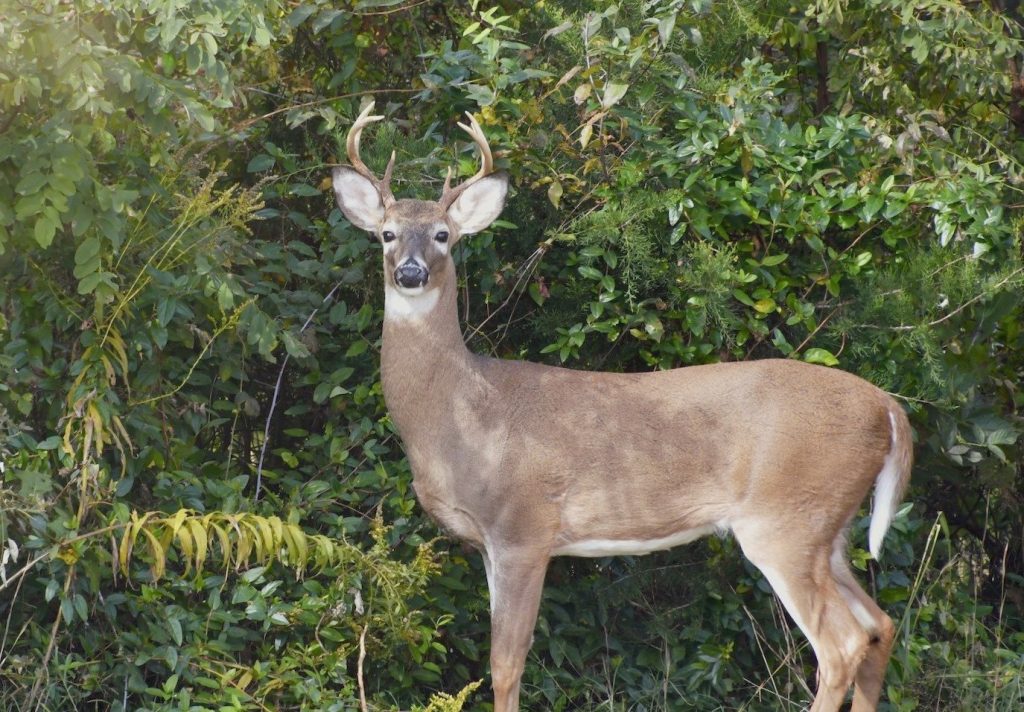
According to Gilliam, planting and fertilizing can be accomplished in various ways, and your local Farmers Co-Op can provide advice for any planting situation.
He said many farmers now use the newer no-till method, while others prefer the traditional route of mowing, spraying, plowing, fertilizing, then planting and covering. Gilliam emphasized that these methods are simply different ways to accomplish the same goal- planting the best seeds to attract and hold deer during the spring and fall while providing forage into the cooler months.
Best Food Plots For Deer In Spring
Gilliam said that hunters must plant in August or early September to have food plots ready for bow season in the middle of October. He recommends wheat and white clover for these early plots. (Ladino, White Dutch, Yuchi)
According to Gilliam seed choice comes down to the soil type in each field and how well it drains, and with that knowledge, your local Co-Op can supply a custom seed blend for any of your plots.
Big Buck Blend
Gilliam also recommends a 3, 5, or 7-way Big Buck Blend with various seed mixes offered exclusively by your local Co-Op. Big Buck Blend contains wheat, oats, cereal rye, and various clovers that provide months of warm-weather forage.
He suggested that corn with planting dates as early as March and forage soybeans, iron clay peas, and sorghum are excellent producers for spring and fall when combined with existing clovers from fall.
Gilliam pointed out that the newer plant called Sunn Hemp is getting a lot of attention. It’s a prolific legume with growth rates of up to one foot per week and reportedly provides over two tons of forage per acre for deer. Sunn Hemp adapts to a wide range of soils if planted when soil temps reach above 50 degrees and grows well on well-drained soils with a pH of 5 to 7.5.
Chestnut Hill Outdoors
Chestnut Hill Outdoors has a different perspective on how a food plot should look. Iain Wallace is the company’s CEO, founded by his parents over 40 years ago. He recommends planting fruit and nut trees along with traditional food plots for longer-lasting results and a more wildlife-friendly environment.
Wallace revealed how his grandfather developed and patented a disease-resistant chestnut after a blight killed millions of trees throughout North America in the early 1900s. He also discussed how the American Chestnut had traditionally played a vital role in Native American culture and was an essential source of nutrition for numerous wildlife.
Wallace said that an acre of chestnuts annually produces 2,000 pounds or more nuts per acre, with more carbohydrates than an acre of corn! Chestnuts were once the favored fall food for many animals because the sweet-tasting nuts are high in protein and carbohydrates with no bitter-tasting tannins like acorns. He mentioned that European farmers once fed chestnuts to their livestock before butchering them to enhance their flavor.
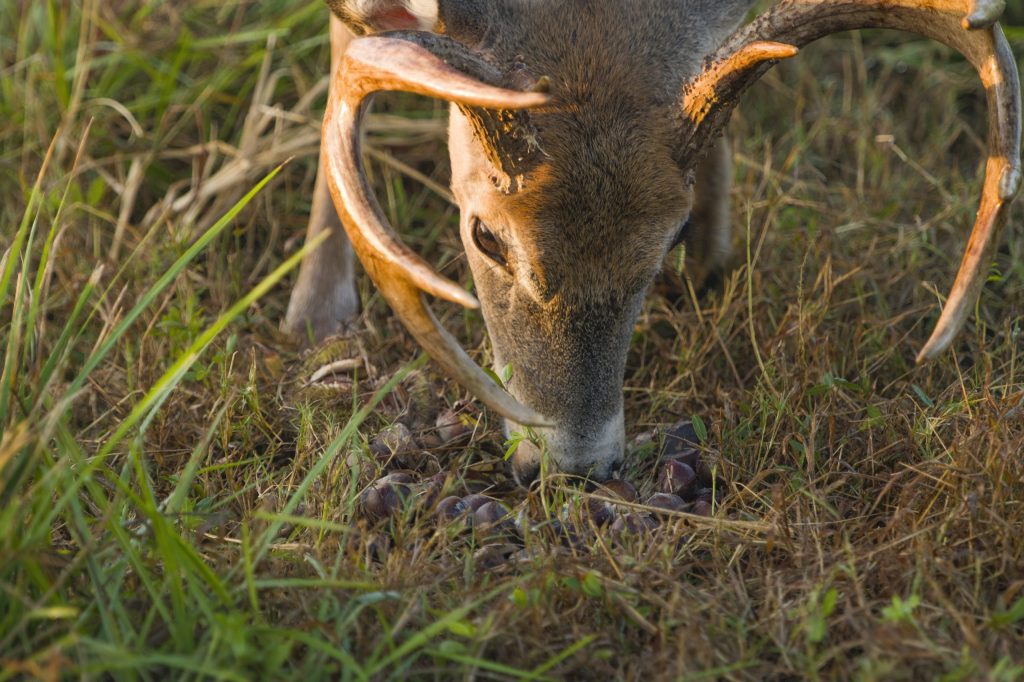
Wallace said their trees produce chestnuts in as little as three years after planting in the spring or fall, and unlike oak acorns, they make nuts yearly that deer prefer over white oaks.
Food plot trees like the Dunstan Chestnut™, pear, persimmon, and crabapple have proven to increase a hunting land’s carrying capacity in the short and long term. In addition, their research says that adding nut and fruit trees to annual food plots provides significantly greater nutritional value for deer. Therefore, they feel every landowner should include their patented Chestnut trees as the best long-term strategy for attracting game to their property.
One advantage of incorporating more trees and shrubs on your property is that a single planting will provide increased food for your deer and other wildlife year after year. Even though feeding habits vary throughout the season, planting additional hard and soft mast can help sustain your wildlife’s nutritional needs throughout the year. That’s why Chestnut Hill Outdoors provides specific tree varieties with varying early and late drop dates, ensuring that necessary nutrients are available at different times of the year to use for the best food plot for deer.
Best Food Plot For Deer In The Fall
Bow hunting for deer in Alabama has grown in popularity as more hunters look to get an early start with their whitetail season. Many clubs now cater to bow hunters, but establishing fields that draw deer in mid-October can be challenging. These early-season plots require careful planning, but a little sweat in the warmer months will lead to the best food plot for deer in the fall.

Planting winter peas and clovers that emerge quickly will provide early forage. Establishing a biennial clover plot in early fall can also provide excellent foraging opportunities through the winter into warmer weather.
Conclusion
The many options available when choosing the best food plot for deer can be daunting, but a little research can help ease your anxiety. So now is a great time to test your soil and get a jump start on preparing those fields for the upcoming deer season.
If you’re still unsure about the best seed, shrub, tree, or fertilizer options for your hunting property, contact Southern Seed & Feed or your local Co-Op, and if you want your deer to taste better, give Chestnut Hill Outdoors a call.

